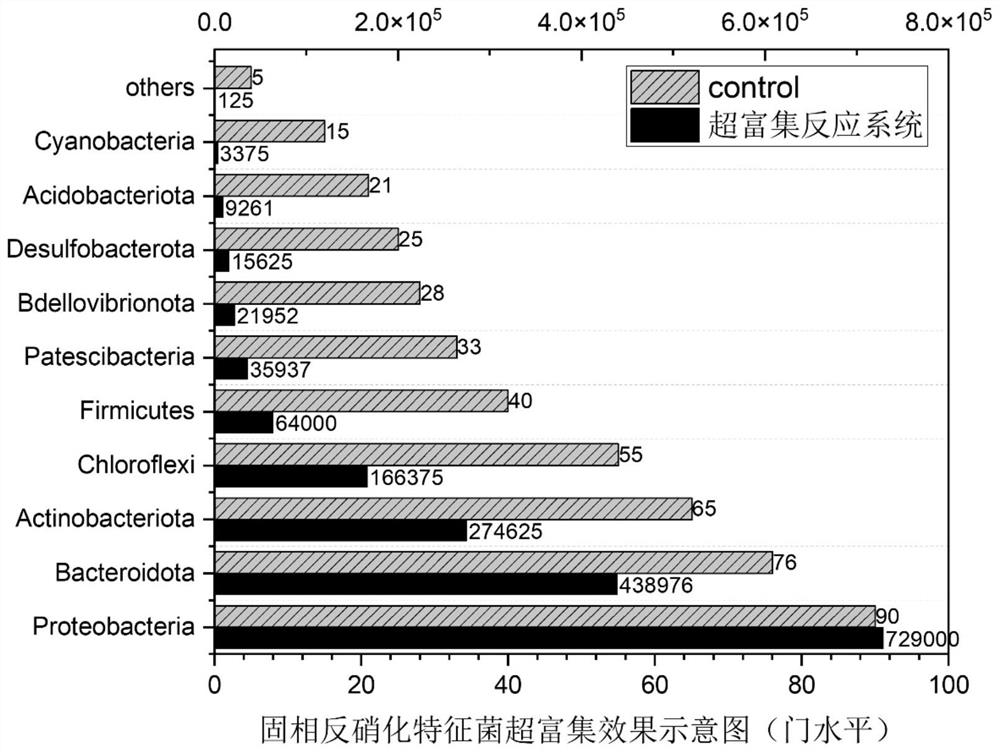Method and system for hyperaccumulating solid-phase denitrifying flora based on nanofiber carbon source
A nanofiber and nanofiber membrane technology, applied in the field of natural water body remediation, can solve the problems of low use efficiency, carbon source does not have the ability to release carbon, non-biodegradable, etc., to avoid short flow, achieve ultra-enrichment, good hydraulic power The effect of the condition
- Summary
- Abstract
- Description
- Claims
- Application Information
AI Technical Summary
Problems solved by technology
Method used
Image
Examples
Embodiment 1
[0038] The system provided by the present invention based on the nanofiber carbon source super-enriched solid anti-nitrifying bacteria group is as follows: figure 1 As shown, it includes a pre-inoculation device 1, and a water inlet pool 4, an inlet water pump 6, a water inlet buffer zone 7, a core enrichment zone 8, and a water outlet 10 connected in sequence;
[0039] Wherein, the pre-inoculation device 1 includes a high-efficiency inoculator 2 and a vacuum pump 3 at the bottom thereof; the water inlet pool 4 is connected to the water inlet buffer zone 7 through the inlet water pump 6; The support plates 9 are arranged at intervals in parallel grids.
[0040] The upper part of the high-efficiency inoculator 2 is an open cuboid, the lower part is an inverted quadrangular pyramid shape, the upper part and the lower part are connected with a perforated plate 11, and the bottom water outlet pipe of the lower part is connected to the Buchner funnel 12, and the Buchner funnel 12 i...
Embodiment 2
[0046] The method for super-enriched solid anti-nitrifying bacteria based on nanofiber carbon source provided by the present invention is:
[0047] S1. First, fix the activated sludge with the help of the pre-inoculation device 1: select PHB and PBAT for physical blending with a mass ratio of 1:1, and mix DMF and chloroform with a volume ratio of 1:1 as a solvent. Mix well at room temperature to make a 10% (wt / v) polymer solution. The working distance of electrospinning was 20 cm, the working voltage was 30 KV, the ambient temperature was 25°C, and the ambient humidity was 40% RH, and the solid-phase carbon source was made into a nanofiber membrane. The selected nanofibers have a diameter of 500 nm and a porosity of 80%.
[0048] The solid-phase carbon source nanofiber membrane is spread on the orifice plate of the high-efficiency inoculator 2, and the fresh secondary sedimentation tank sludge and the culture solution are mixed according to the volume ratio of 1:1 as the inoc...
PUM
| Property | Measurement | Unit |
|---|---|---|
| Diameter | aaaaa | aaaaa |
Abstract
Description
Claims
Application Information
 Login to View More
Login to View More - R&D Engineer
- R&D Manager
- IP Professional
- Industry Leading Data Capabilities
- Powerful AI technology
- Patent DNA Extraction
Browse by: Latest US Patents, China's latest patents, Technical Efficacy Thesaurus, Application Domain, Technology Topic, Popular Technical Reports.
© 2024 PatSnap. All rights reserved.Legal|Privacy policy|Modern Slavery Act Transparency Statement|Sitemap|About US| Contact US: help@patsnap.com










